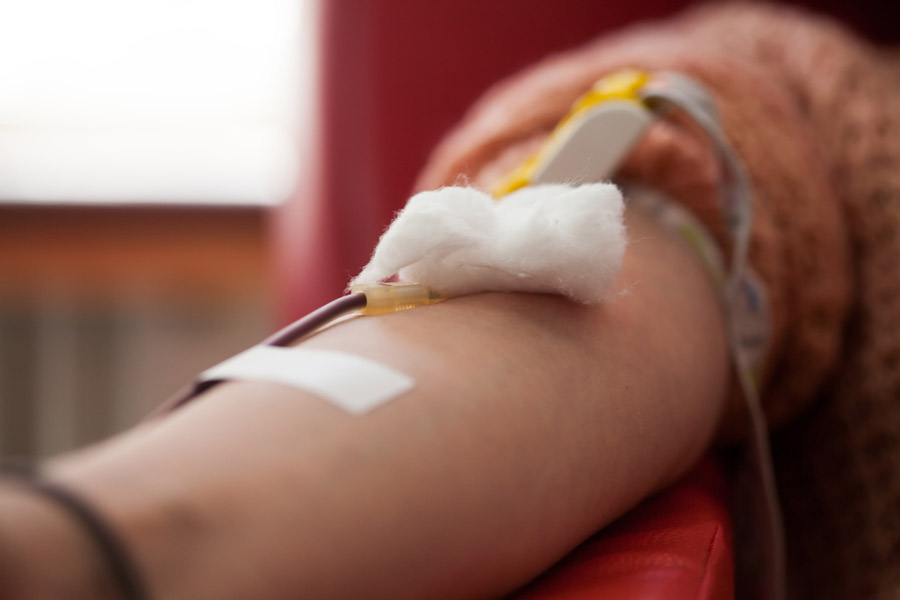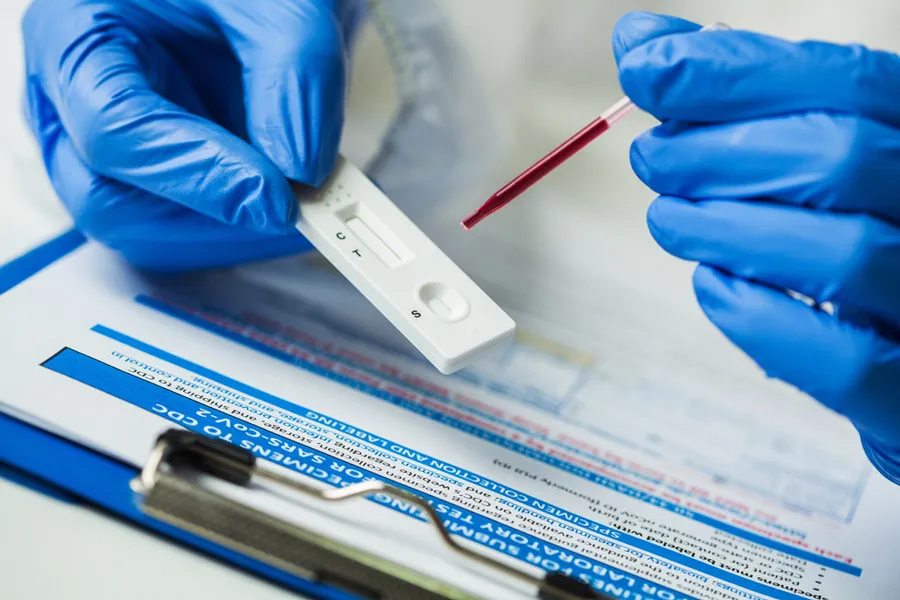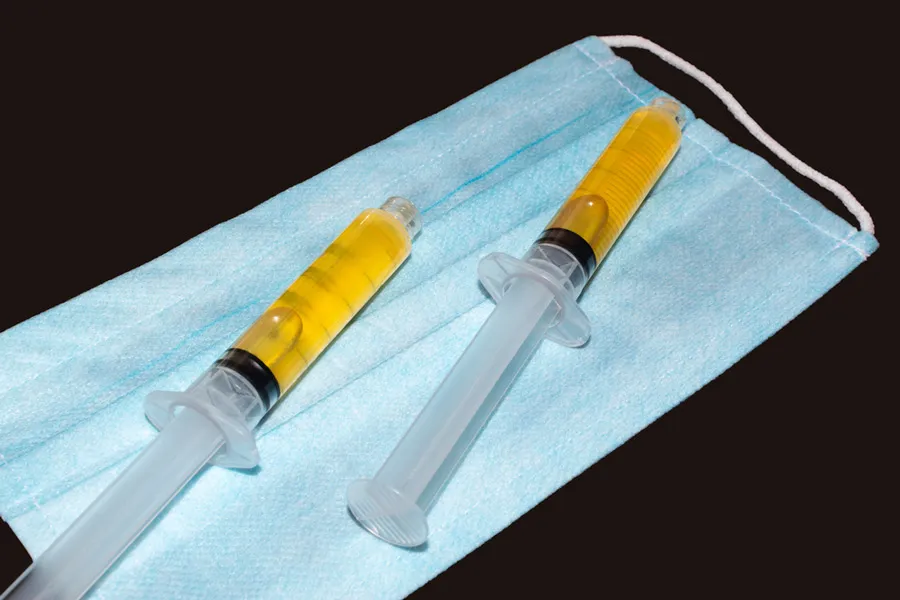How is convalescent plasma from recovered people used for critically ill COVID-19 patients? How much plasma is used? What safety measures are followed?
Dr. Servando Cardona, director of Clinical Research at TecSalud, explained how this innovative treatment works in the fight against the disease.
He confirms that this process is producing evidence that he described as extraordinary, and that could be used in future.
This specialist also called for plasma donations. In addition to helping save lives, donations support high-level Mexican research carried out by Tec de Monterrey.

WHAT IS CONVALESCENT PLASMA?
Dr. Cardona explains that convalescent plasma is taken from people who have had the disease and have already recovered.
“The only thing that is removed is plasma, which is a cell-free liquid rich in proteins called immunoglobulins. These help other people because they contain antibodies.
He confirms that other components of the blood, such as red cells, white cells, platelets, and lymphocytes are returned to the donor.
Dr. Cardona explained that they are looking for neutralizing antibodies, as these are the ones that work best against this virus.
“Someone may have many antibodies but few neutralizing antibodies, or a few antibodies, but they’re all neutralizing antibodies. That’s what we are learning: how much they vary.”

WHEN DID ALL THIS BEGIN?
“By March 24, we already had critical patients admitted to TecSalud, and that was when an interdisciplinary group decided to use this treatment: because the whole institution is working on this.”
Dr. Cardona pointed out that when they started the convalescent plasma process, they took part in the creation of national guidelines for its use.
“The National Transfusion Bank requested that only between 600 to 800 milliliters (of plasma) be taken, avoiding the need for any replacement.”
He explains that the same person can donate a second time after 3 weeks but, that so far, they do not know how long this process could continue, which is something they hope to discover through this research.
WHAT IS THE PROCESS LIKE?
The specialist said that while the treatment may seem simple, there are many things that must be taken into account because the plasma is being taken from a person who had COVID-19.
- Safety procedures
The doctor says that the first thing to do is to ensure that the donor does not show symptoms of the disease, so 14 days must have elapsed.
“Then, a nasal swab is taken to see if the virus is present in the airway, just like that which was used to detect the disease in the first place.
“If it is negative, we then calculate the viral load in the plasma, i.e. how much virus is circulating in that person’s blood.”

- Plasma extraction
If the test result is negative, a procedure called ‘apheresis’ is carried out, which is the extraction of plasma, separated from other blood cells.
When we have the correct amount, 600 milliliters for example, it is divided into 3 different packets.
- Use
“You have to remember that hospitalized people often have pneumonia and are normally connected to a ventilator. If we overload them with fluid, we may ‘drown’ the patient, because their lungs will fill up even more.”
The first part of the procedure is to give them 200 milliliters and then, 24 hours later, give them a second dose. Then it is decided if it is necessary to give a further dose of 200 milliliters on the fifth day of treatment.
- Evaluation of the results
“By transfusing the serum, we want to be able to see if the quantity of the virus is reduced, focusing on whether the antidote causes an exponential decrease”.
The specialist mentioned that the convalescent plasma treatment worked on the first 3 patients who received it.
“We have observed patients with low viral loads, but with other diseases such as high blood pressure, diabetes, and kidney disease, which make them more prone to the disease, and we have seen young people with high viral loads who don’t have any symptoms.”
He notes that so far it has not been possible to truly identify whether people’s immune systems work correctly or not, and whether this causes the disease.
“What we have seen is a positive correlation between the use of plasma and B lymphocyte counts. Seeing how the body is able to respond is a wonderful thing”.

WHAT CHALLENGES DID THEY FACE?
Dr. Cardona mentioned that they found that antibodies decrease in people once they are cured of the disease.
“From there, we had to determine the perfect moment to extract plasma that had enough antibodies to be useful for the other person.”
The best time was calculated to be after 14 days, which is the point at which the number of antibodies is sufficiently high.
“We are learning a lot about the immune system: this is extraordinary, and it is helping us lay the foundations for curing other diseases, not just COVID-19.”
HOW IS THE PLASMA ANALYZED BEFORE IT IS GIVEN TO PATIENTS?
Dr. Cardona points out that standard procedures are used to ensure that the plasma does not contain the novel coronavirus or other diseases, such as hepatitis B or C, syphilis, and AIDS.
He points out that other more, specific tests, are carried out in the COVID Plasma Donation Center.
“They are complex molecular processes, which are difficult to undertake. People must have specialist knowledge so that the sample is really reliable. Tec de Monterrey has those people.”
WHAT IS THE MAXIMUM LENGTH OF TIME BETWEEN THE EXTRACTION AND USE OF PLASMA?
Dr. Cardona said that in the first cases, as they were urgent, the plasma was transfused almost the same day that it was extracted. He pointed out that plasma can be frozen for optimum use.
“Plasma can last up to a year in good condition. It is clinically viable and can be thawed safely.”

CAN CHILDREN RECEIVE PLASMA?
The doctor said that they have not had to treat any child with plasma so far but, if a case were to present itself, the dose would have to be calculated with the support of a pediatric pulmonologist.
“(The dose) would definitely be different and we would have to see what other special considerations we would need to take into account in a pediatric case. The same applies to pregnant women. If we were to transfuse plasma into a child or a pregnant woman, special precautions would have to be taken and adjustments made.”
HOW MANY PEOPLE ARE EXPECTED TO BENEFIT FROM THIS?
The doctor said there is no precise number, but that they are looking to apply plasma to 5 percent of seriously ill hospital patients.

THE REQUEST
“(TecSalud and the Nuevo León government) have created the first exclusive COVID plasma center in Mexico. (We will have) enough plasma for it to be used by a sick person in any location, and we are trying to get ahead of the current situation.”
The doctor also made a request for people to donate plasma and give financial support.
“The tests required are high-quality and very meticulous and, for that same reason, they are very expensive”.
He clarifies that neither donors nor recipients pay for this because the product cannot be sold.
THE FUTURE
Dr. Cardona says that donation is the greatest act of heroism that a person can give or receive.
“We are hoping for 120 plasma donors. So far, we have had 9 people who have been willing to donate, but we need 10 times more. That’s why we’re asking everyone, and that includes financial resources: we need 10 times more than we have now.”
The doctor said that we should be thinking about what to do when the pandemic is over.
“We must begin to think about how we are going to be able to leave our homes, which is something we’re going to have to do. We’re already preparing for that moment: there are other analyses, other tests. But how are we going to go about leaving our homes? That’s going to be interesting.”
Photos: Shutterstock
READ MORE NEWS AT CONECTA:





